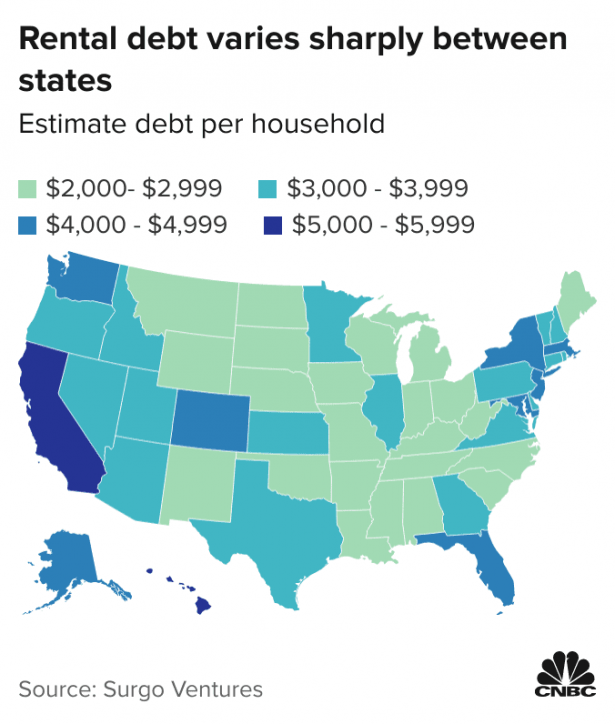More than 11 million Americans continue to report being behind on their rent.
To see an interactive map of how much renters owe per state, click here
How much renters owe varies greatly from one state and county to the next, according to data provided to CNBC by Surgo Ventures, a nonprofit organization focusing on health and data.
Across the country, the average renter household in arrears owes $3,700. The typical debt in Alabama is $2,700. In California, meanwhile, it’s closer to $5,300.
In some areas, renters face an even larger debt. In San Mateo County, California, the typical renter who’s behind is $8,700 in the hole. Struggling renters in Bergen County, New Jersey, owe an average of $6,400. A study earlier this year by New York University found that thousands of renters in New York City have debts over $10,000.
The differences in need across the country is important to consider, said Aaron Dibner-Dunlap, senior research scientist at Surgo Ventures.
“If you live in a county with a high cost of living, such as many in California and New York, officials need to ensure there are enough public funds to cover the estimated debt,” he said.
The share of U.S. renters who are behind — around 16% — hasn’t changed much since March.
That’s in large part because of how slow states and cities have been in distributing the $46 billion in federal rental assistance allocated by Congress. By the end of June, just $3 billion had reached people.
Renters just got a little more time to try to access the government aid and before they have to fear an eviction.
This week the Centers for Disease Control and Prevention issued a new eviction moratorium, after the previous one expired on July 31. The protection applies until Oct. 3 and to places where Covid rates remain high. That currently covers around 80% of counties.


Spread the word